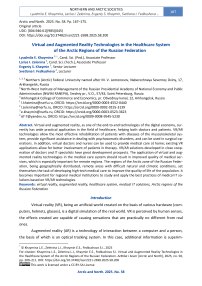Virtual and Augmented Reality Technologies in the Healthcare System of the Arctic Regions of the Russian Feder
Автор: Khaymina L.E., Zelenina L.I., Khaymin E.S., Fedkushova S.I.
Журнал: Arctic and North @arctic-and-north
Рубрика: Northern and arctic societies
Статья в выпуске: 58, 2025 года.
Бесплатный доступ
Virtual and augmented reality, as one of the end-to-end technologies of the digital economy, currently has wide practical application in the field of healthcare, helping both doctors and patients. VR/AR technologies allow the most effective rehabilitation of patients with diseases of the musculoskeletal system, provide significant assistance in dealing with psychosomatic disorders, and can be used in surgical operations. In addition, virtual doctors and nurses can be used to provide medical care at home; existing VR applications allow for better involvement of patients in therapy. VR/AR solutions developed in close cooperation of doctors and IT specialists have great development prospects. The application of virtual and augmented reality technologies in the medical care system should result in improved quality of medical services, which is especially important for remote regions. The regions of the Arctic zone of the Russian Federation, being geographically distributed, remote areas with difficult natural and climatic conditions, set themselves the task of developing high-tech medical care to improve the quality of life of the population. It becomes important for regional medical institutions to study and apply the best practices of medical IT solutions based on VR/AR technologies.
Virtual reality, augmented reality, healthcare system, medical IT solutions, Arctic regions of the Russian Federation
Короткий адрес: https://sciup.org/148330883
IDR: 148330883 | УДК: [004.946:61](985)(045) | DOI: 10.37482/issn2221-2698.2025.58.200
Текст научной статьи Virtual and Augmented Reality Technologies in the Healthcare System of the Arctic Regions of the Russian Feder
DOI:
Virtual reality (VR), being an artificial world created on the basis of various hardware (computers, helmets, glasses), is a digital simulation of the real world. VR is perceived by human senses, the effects created are capable of causing sensations that are practically no different from real ones.
Augmented reality (AR) is a technology of interaction between a computer and a person, the basis of which is an optical tracking system. In this case, additional information is superim posed on the picture of the real world, using software tools to visually combine the natural world around a person and the virtual world created on the computer. The camera used in this process recognizes markers from the real environment, moving them into the virtual environment, thereby superimposing one layer of reality on another 1.
Multi-experimentality based on VR/AR technologies is a strategic technological trend in the development of the modern world. VR/AR products are being actively implemented in marketing, retail, industry, education, medicine and many other industries 2.
In accordance with the development roadmap “End-to-end digital technology “Virtual and augmented reality technologies”, VR/AR solutions are designed to ensure the technological leadership of the Russian Federation 3. The effectiveness of the introduction of VR/AR technologies into the healthcare system can not only reduce the number of people who have completely or partially lost their ability to work (through rehabilitation in virtual reality), but also significantly reduce the number of errors made by specialists trained using VR/AR.
Thus, the use of VR/AR technologies in medicine should result not only in an increase in the level of working capacity of the population, but also in an improvement in the quality of medical services, including in remote regions of the Russian Federation. The development of high-tech medical care is a particularly pressing issue for medical institutions in the Arctic regions, which are geographically distributed territories with harsh natural and climatic conditions [1].
VR/AR technologies in the healthcare system
Currently, virtual reality technologies are widely used to solve many medical problems 4:
-
1. Performing surgeries
Data obtained from MRI and CT is used to create a virtual model of the patient, which can be used by surgeons to prepare and perform complex surgeries. An example of the use of AR technologies is the first operation performed in 2020 in Stavropol using AR glasses, which allow the surgeon to visualize a hologram in 3D, making it possible to present data, for example, on the patient’s medical history, CT scan data, etc. If necessary, with one click of the hand, the doctor can project them in front of him during the operation 5.
-
2. Rehabilitation of patients after strokes and injuries
-
3. Psychological rehabilitation
According to medical research, most patients perform less than one third of the exercises necessary to recover from strokes or injuries. VR helmets or VR glasses can make the recovery process more productive and efficient through gamification [2–4].
VR technologies that allow creating an environment in which the patient can “get in touch” with the objects of their own fears can be effectively used to combat various kinds of phobias [5].
It should also be noted that VR/AR technologies are widely used in training doctors. An example is the computer system for generating images in virtual space developed by employees of the Rostec State Corporation, which allows not only to teach medical students basic endoscopy skills (examination of the patient’s internal organs to make a diagnosis) and practice laparoscopy technology, but also to effectively develop a scenario for an operation by experienced surgeons, determining the leading strategy for performing surgical intervention, taking into account the individual characteristics of the patient. The use of such technologies undoubtedly reduces the level of possibility of medical error, and, accordingly, the risks to the lives of patients 6.
Currently, hardware and software systems are also being developed that allow the use of VR/AR technologies in the field of ophthalmology, treatment of mental disorders, diagnosis of various diseases, development of communication skills, and much more. Let us consider some of them.
Virtual dentistry
Digital systems used in modern dentistry make it possible to create virtual 3D models with a high level of accuracy reflecting the individual characteristics of the patient and, as a result, contribute to the provision of quality prosthetic services of various degrees of complexity. “Smart glasses” displaying a three-dimensional model of teeth allow the dentist to learn and apply the acquired skills in practice when performing various dental procedures, for example, treating a tooth with a virtual drill [4].
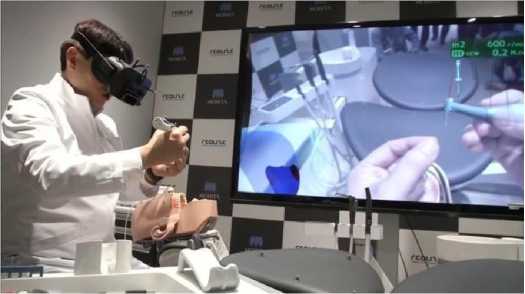
Fig. 1. Virtual reality in dentistry 7.
Neurorehabilitation
Virtual reality, by simulating the space needed for recovery of the damaged brain, immerses it in an environment in which neural connections are restored (biofeedback algorithm). Neurologists believe that the possibilities of using VR technologies for the rehabilitation of patients who have suffered a stroke are promising. An example is the developed method of “3D audio visualization”, which allows restoring hand motor functions based on “stimulation of motor imagination through visual feedback” [2; 3; 4].
Obviously, the above-mentioned areas of medicine are not the only example of the use of virtual and augmented reality technologies. Currently, VR/AR can be used in studying issues of human aging (gerontology) 8; virtual doctors and nurses can be used to provide medical care at home; existing VR applications allow better involvement of patients in therapy, helping a person to independently overcome chronic pain, anxiety or undergo rehabilitation, for example, restoring joint function.
Currently, open platforms are being formed in the Russian Federation, the knowledge bases of which contain information on current digital technologies (ready-made software solutions and application practices), including VR/AR, in various applied areas, a significant part of which is in the field of medicine. An example can be the Moscow platform of digital solutions ICT.Moscow.

Within the framework of the National Technology Initiative, competence centers are being actively formed to create innovative solutions in the field of end-to-end technologies, one of which is the NTI Competence Center, created on the basis of the Far Eastern Federal University (“Neurotechnology, virtual and augmented reality technologies”). The priority project of the Center is a method of rehabilitation of patients who have suffered a stroke (disorder of the vestibular apparatus and musculoskeletal system), based on tactile feedback using virtual reality technologies. The VR simulator includes a set of exercises of several difficulty levels, containing a motivation system based on gamification elements. The VR simulator is synchronized with the TeslaSuit tactile feedback suit, which gives an adequate assessment of the patient’s muscle condition as a result of the session and affects non-working/incorrectly working muscle groups, stimulating them. With the use of this complex, it is predicted that the efficiency of the rehabilitation process will increase by at least 25% 10.
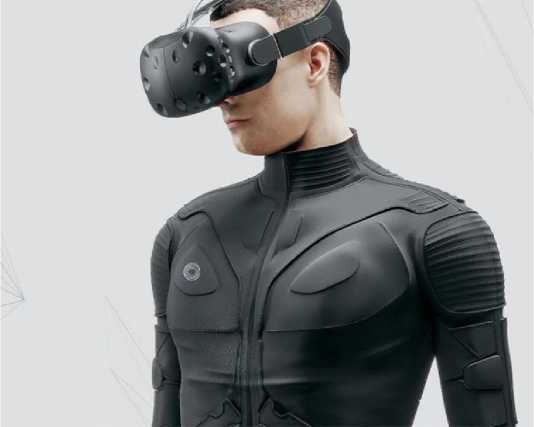
Fig. 3. Rehabilitation software and hardware complex 10.
Practices of using VR/AR technologies in the healthcare system in the Arctic zone of Russia
Virtual reality for the prevention and treatment of mental illnesses
Revro Company, a resident of the IT Park “Yakutia”, presented a digital solution for the treatment of depressive disorders based on the use of a VR helmet. With the help of a headset and an application, a person finds himself in a digital environment: in a room where there is a crying teenager (similar to the patient), who needs to be calmed down, supported, praised. Once the goal is achieved, the patient finds himself in the place of the teenager and already hears compli- ments and words of support addressed to him.
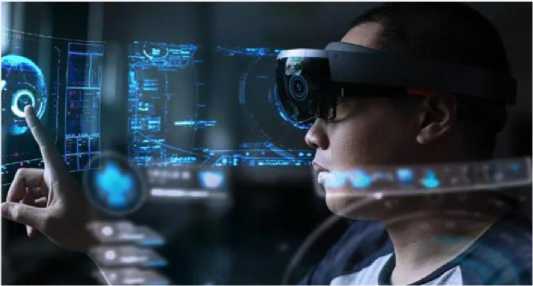
Fig. 4. Therapy of mental illnesses based on VR technologies 11.
Thus, the game scenario allows coping with psychological problems associated with low self-esteem, depressive disorders and phobias of various kinds, for example, fear of public speaking.
VR technologies for rehabilitation of the musculoskeletal system of children and adults
IT Company “Kinestetika” (Republic of Sakha, Yakutia) implemented the project “Digital platform for the rehabilitation of children with cerebral palsy PlantyGo”. This solution confirmed the feasibility of using virtual reality technologies for the sensory-motor rehabilitation of children with cerebral palsy and other types of musculoskeletal disorders. Three-dimensional images, animation, computer environment allow the child to receive virtual sensory information, feel events and perform real actions/movements 12. Thus, a child with disabilities develops the musculoskeletal system with the help of a video game, working on reaction and endurance.

Fig. 5. Digital platform “PlantyGo” 13
In the Yamalo-Nenets Autonomous Okrug (Muravlenko city), the Devirta-Delfi complex 14 operates in the social services center, allowing for neurorehabilitation of limbs (restoration of motor activity) of patients with cognitive and motor disorders after injuries, surgeries and strokes.

Fig. 6. Devirta-Delfi complex 15.
Virtual reality technologies, using the principle of biological feedback, allow for more efficient and intensive training in an artificial three-dimensional world, while giving both the patient and the doctor the opportunity to see how the exercises are performed in real time with a real image of the patient. The sounds of dolphins and the game form motivate a person to perform a set of rehabilitation exercises.
Virtual simulators
The Centre for Advanced Professional Training of the Republic of Sakha (Yakutia) hosts master classes in the format of professional trials in the areas of competence for students. As part of the IT Medic competence trial, a step-by-step implementation of the tasks of the virtual simulator “COVID-19 VR Strikes Back” was proposed: students made PCR smear samplings for COVID-19 using VR glasses “Viva Focus Plus” through the virtual simulator “COVID-19 VR Strikes Back”. Students were given the opportunity to act as a doctor implementing a specific medical task in virtual reality 16.
At the North-Eastern Federal University named after M.K. Ammosov (Yakutsk), virtual technologies are used to train practicing doctors, physicians and interns using the Shell ultrasound simulator. The virtual simulator allows for training without a patient, improving practical skills and abilities in conducting ultrasound diagnostics in realistic conditions, while reducing the level of possible errors that lead to negative clinical consequences.
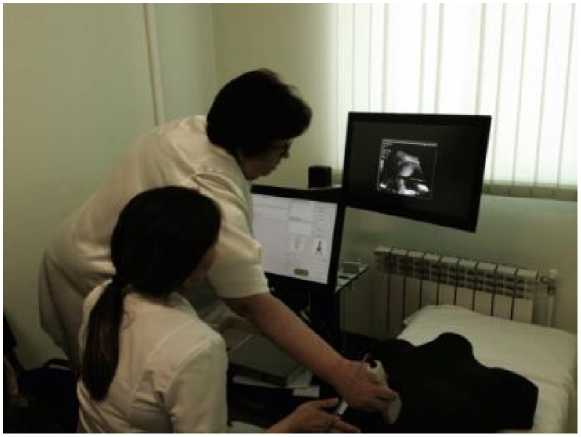
Fig. 7. Teaching ultrasound diagnostics 17.
It should be noted that the significance of using virtual simulators in training medical personnel is great. Practical training, development of clinical thinking, acquisition of practical skills and abilities are the main tasks of simulation technologies in medicine. In the Russian Federation, there are currently a sufficient number of companies offering ready-made solutions based on the use of virtual simulators in training in such areas of medicine as neurosurgery, ophthalmology, radiology, laparoscopy, dentistry and many others.
Conclusion
Improving the quality of medical care for the population is a priority task in the Russian Federation. Digital transformation in the medical system, defined as “digital health”, is designed to solve many problematic situations of providing medical services, including in institutions in the Arctic regions of the Russian Federation. Quite often, current problems are solved using artificial intelligence technologies [1; 6–8].
Today, there is a significant increase in the level of scientific interest in the use of VR/AR in medicine [9–14]. Virtual and augmented reality technologies come to the aid of patients and doctors, solving a wide range of problems, from training and practicing skills of medical personnel to treatment and rehabilitation of patients.
Scientists, IT specialists, representatives of medical institutions and universities are working in a consolidated manner to use the capabilities of VR/AR technologies in medicine. Undoubtedly, the application of advanced practices of medical IT solutions based on VR/AR technologies by regional medical institutions is becoming important.

